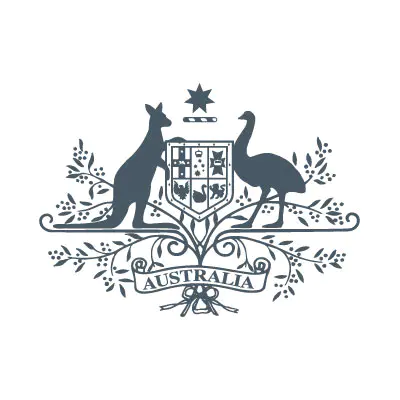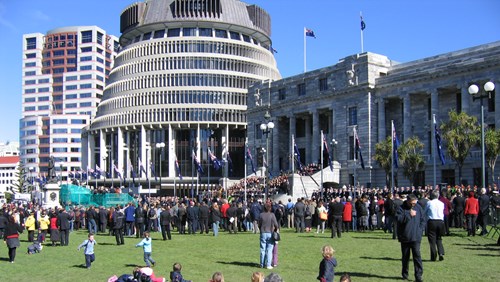
ATSB Urges Action After Bulk Carrier Near Stranding
The Australian Transport Safety Bureau has issued formal recommendations to three government agencies and a salvage operator with the release of its final report into the near stranding of the bulk carrier Portland Bay near Sydney in July 2022.
“The stranding on pristine national park coastline of a 170-metre ship carrying 950 tonnes of heavy fuel oil would have had internationally significant environmental and economic consequences, and as such this was one of the ATSB’s most comprehensive marine occurrence investigations in nearly two decades,” ATSB Chief Commissioner Angus Mitchell said.
Portland Bay had been berthed at Port Kembla on 3 July 2022 when deteriorating adverse weather made it unsafe for it to remain in port, and the harbourmaster and ship’s master decided that the ship should sail and remain at sea until the weather improved.
After leaving Port Kembla, the ATSB’s 160-page final report notes that Portland Bay remained much closer to the coast than the 50 nautical miles prescribed by the ship’s procedures.
Early in the morning of 4 July, while drifting and slowly steaming just 12 miles from the coast, the ship’s main engine developed mechanical problems.
“This loss of propulsive power in prevailing gale force winds, very rough seas and a heavy swell, effectively disabled Portland Bay, and the ship began to drift toward the rocky coast,” Mr Mitchell said.
“Delays with the ship’s master initially reporting the incident were then compounded when NSW authorities did not immediately pass on the information to the national response authority, the Australian Maritime Safety Authority.
“It was only after several emergency broadcasts and a radio plea for assistance that a harbour tug was dispatched, which arrived nearly five hours after the ship was first disabled.”
By the time that tug, which did not have an operational towing winch or a suitable towline, arrived, Portland Bay’s master had made emergency use of both anchors one mile off the rocky shoreline of Royal National Park.
“The ship’s anchors, while not designed to hold the ship in these severe conditions, prevented a catastrophic stranding on the rocky shore,” Mr Mitchell said.
Fortunately, the anchors reduced the ship’s progress towards the coast until two more harbour tugs arrived, about five hours after it was anchored.
In the following hours, these two tugs began towing the ship away from the coast, but some time later, the towline of one of the tugs failed and Portland Bay again began drifting towards the shore, now off Cronulla.
The ship’s master was forced for a second time to deploy both anchors.
“Even with both anchors deployed and one tug connected, the ship did not hold its position and it continued to slowly move towards the coastline overnight,” Mr Mitchell said.
The ATSB’s investigation found a key factor in the prolonged exposure of the ship and its crew to stranding, was the extensive delay in tasking the state’s nominated ocean-going emergency towage vessel, Svitzer Glenrock.
The Port Authority of NSW had assumed control to lead the response, with AMSA and NSW Maritime as support agencies.
“The initial request to AMSA for Svitzer Glenrock to be activated was made around midday on the first day by the Port Authority,” Mr Mitchell said.
“However, this first request was lost between the two agencies’ incident control rooms and was not followed up for many hours.”
It was not until after the towing attempt had failed and a further two requests were made that AMSA tasked Svitzer Glenrock, almost 13 hours after the emergency began.
“Around 30 hours after Portland Bay’s master had reported its disablement followed by MAYDAY broadcasts and the emergency anchoring, Svitzer Glenrock arrived after a voyage of 90 nautical miles from Newcastle in very rough weather,” Mr Mitchell noted.
“On the following day, more than 48 hours after the emergency developed, the ship was towed into Port Botany for refuge and repairs by the ETV with harbour tugs.”
The ATSB’s investigation identified 8 safety issues associated with the emergency response, highlighting confusion and inefficient coordination between the multiple agencies involved.
“Three legislated bodies had a defined role within relevant legislation and state and national plans to respond to this emergency, but each agency did not believe that the response necessarily fell within their responsibility, and they have since justified this belief through three differing interpretations of the same plans,” Mr Mitchell said.
“These differing understandings of responsibilities effectively left a significant proportion of the emergency response in the hands of commercial arrangements – arrangements that had inherent limitations, most notably an immediate lack of available and suitable assets for the required task.”
The report notes the NSW and Australian national plan for managing maritime emergencies are designed to provide the best available actions in managing risks along Australia’s extensive and pristine coastline.
“AMSA and the Port Authority of NSW had not effectively implemented their respective procedures to comply with these plans, and NSW Maritime, the statutory agency responsible for ensuring the state was prepared to respond to this type of incident, had not effectively met this obligation,” Mr Mitchell said.
“The National Plan reiterates the principle of ‘over-escalation’ in an initial response, on the basis that it is more effective to scale down, than up,” he continued.
“While the first responding tug crew have been praised for their efforts in what were very challenging weather and operational conditions, the three harbour tugs that were initially deployed to manage this emergency were not properly equipped, and ultimately were always going to be incapable of effectively towing the ship in the rough, open seas even though at 15,500 tonnes, it was less than half the weight had it been fully laden with cargo.
“It was only the emergency deployment of both anchors on two separate occasions that very fortunately prevented Portland Bay from stranding in pounding seas, before the only capable ocean-going ETV in NSW arrived after an extended, unnecessary delay.”
Mr Mitchell acknowledged several safety actions taken by AMSA and the ship’s management company, which are detailed in the final report.
“However, eight safety issues identified by the investigation have not yet been addressed to the ATSB Commission’s satisfaction, which is why we have made safety recommendations to four organisations, calling for additional action to be taken,” he said.
To AMSA, the ATSB has recommended the agency takes further action, or completes proposed safety action, to address the following (summarised) inter-related safety issues:
The ATSB has recommended the Port Authority of NSW takes action to address the following (summarised) safety issues:
To NSW Maritime, the ATSB has recommended the agency take action to address the finding that:
And to United Salvage, the ATSB has recommended the organisation:
The ATSB will continue to monitor for action taken by the responsible organisations in addressing these recommendations.
You can find here the final report: Propulsion failure and near stranding of Portland Bay on the coast 22 km south of Port Botany (Sydney), New South Wales, on 4 July 2022
https://www.atsb.gov.au/media/news-items/2025/atsb-issues-recommendations-government-agencies-salvage-operator-following-near-stranding-bulk-carrier-near-sydney


